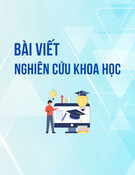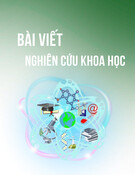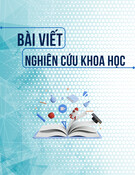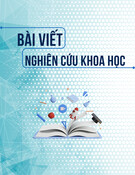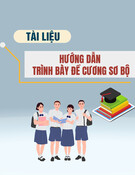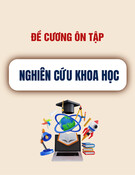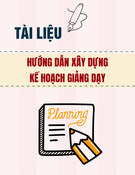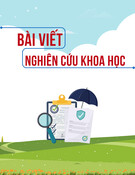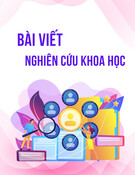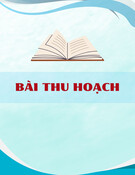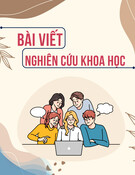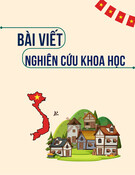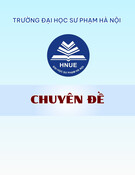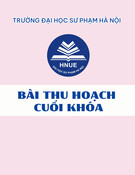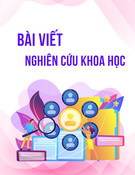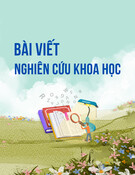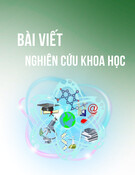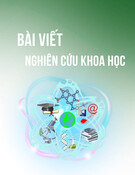
179
HNUE JOURNAL OF SCIENCE
Educational Sciences 2024, Volume 69, Issue 5B, pp. 179-190
This paper is available online at http://hnuejs.edu.vn/es
DOI: 10.18173/2354-1075.2024-0146
TEACHING INTEGRATED TOPICS TO DEVELOP THE ABILITY TO APPLY
KNOWLEDGE AND SKILLS FOR EARLY PRIMARY SCHOOL STUDENTS
Hoang Thi Nga1,* and Pham Thi Anh Hong2
1Department of Postgraduate Management, Hai Phong University, Hai Phong city, Vietnam
2Faculty of Primary and Preschool Education, Hai Phong University, Hai Phong city, Vietnam
*Corresponding author: Hoang Thi Nga, e-mail: ngaht85@dhhp.edu.vn
Received June 20, 2024. Revised October 20, 2024. Accepted December 28, 2024.
Abstract. Integrated teaching is one of the solutions that contributes to resolving the conflicts
between the increasing amount of knowledge that needs to be included in teaching and the
limited amount of learning time, and is also a solution to help students mobilize synthesis
knowledge and skills from many different fields to solve real-life problems, thereby
developing necessary competencies. This study is based on qualitative methods: analysis and
synthesis of documents with research content related to integrated teaching or the ability to
apply knowledge and skills; observation of groups of 3rd grade students in the process of
teaching integrated topics. The article focuses on clarifying perspectives and levels of
integrated teaching; concepts and expressions of the ability to apply knowledge and skills.
From there, the article builds a process of teaching integrated topics to develop the ability to
apply knowledge and skills for early primary school students. Finally, the article presents the
application of this process through a specific illustrative example of teaching the integrated
topic "Buying and selling goods" (Grade 3).
Keywords: integrated teaching, integrated topics, ability to apply knowledge and skills, early
primary school students.
1. Introduction
The current international integration process requires a fundamental and comprehensive
change in the education system to train a qualified workforce to meet the needs of economic -
social development. The main content of the educational reform is to change learning and teaching
in the direction of developing the capacity to improve the quality of human resources in the new
era. According to Roegiers X (1996), the nature of teaching based on learners' abilities is an
integrated teaching process, requiring teachers to set clear integrated goals to determine
participating abilities, thereby setting requirements for each competency and proposing
pedagogical methods and ways to evaluate students' comprehension results. Because it is
necessary to synthesize many sources of knowledge and methods from different subjects to learn
about an object [1], it is necessary to limit the fragmentation of single-subject knowledge which
leads to the separation of the object’s understanding, lacking unity and content connection.
According to Marini AE & McDougall D (1998), the ultimate goal of the teaching process
is for learners to apply what they have learned in life. The reason is that the amount of knowledge





